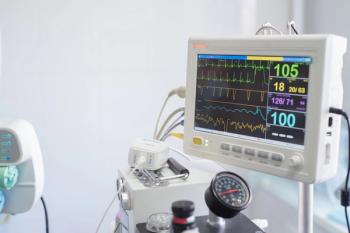
How risky is extended tamoxifen?
Research point to risk as well as benefits of extended adjuvant tamoxifen for ER-positive BCa. PLUS: Should breast cancer screening be risk-based? ALSO: Side effects of cross-sex hormones in transwomen.
While extended adjuvant tamoxifen therapy has been found to improve breast cancer-free survival rates in premenopausal women with estrogen-receptor positive breast cancer, new
The researchers performed two systematic literature searches with the primary aim of the first search to identify risk of endometrial malignancy in the setting of extended tamoxifen therapy. The primary goal of the second search was to identify the efficacy of routine endometrial surveillance in all patients receiving tamoxifen.
The endometrial malignancy studies were winnowed down to four RCTs, which included 21,361 patients, of whom 7652 (35.8%) received extended therapy. Three of the studies (ATLAS, aTTom, NSABP B-14) compared extended adjuvant tamoxifen therapy with standard (5-year) therapy with or without placebo. The fourth study (Scottish) compared indefinite tamoxifen therapy at a 10-year interval with 5 years of treatment.
Studies on endometrial surveillance were also winnowed down, from 301 to four studies that met the inclusion criteria. The researchers use the Newcastle-Ottawa quality assessment scale to determine the quality of each eligible study. Points were awarded for patient selection (maximum 4 points), comparability of cohorts (maximum 2 points), and outcome assessment (maximum 3 points). Studies were eligible for inclusion if they were prospective original studies published in English, that reported on the identification of endometrial abnormalities and malignancy in patients who received tamoxifen during endometrial surveillance. However, quality assessment was poor due to the heterogeneity in study designs, endpoints, and surveillance methods. Only one of the studies compared endometrial surveillance methods in women receiving tamoxifen against a cohort not receiving tamoxifen.
The results of the endometrial malignancy analysis illustrated that risk of developing endometrial malignancy was significantly higher in patients undergoing extended therapy than those who received therapy for 5 years and carried an absolute risk from 1.5% to 3.2% (RR 2.29, 95% CI, 1.60 – 3.28). In NSABP B-14 study, the risk ratio was 6.84, but 21 of 24 endometrial cancers were International Federation of Gynecology and Obstetrics (FIGO) stage 1 with good to moderate histological grade when diagnosed. The ATLAS study found extended therapy was associated with a twofold increase in 15-year endometrial cancer risk almost exclusively in postmenopausal women. The other two included studies had similar results (aTTom [RR 2.28, 1.61 – 3.22] and Scottish [RR 3.42, 0.72 – 16.22]).
The authors note several limitations to their analysis. Several patient-related factors, such as family history and obesity, were not addressed in the studies and may have acted as confounding variables. Their analysis of endometrial surveillance was made difficult due to the lack of uniformity between the studies that matched their inclusion criteria. However, they believe their findings on the increased risk of endometrial cancer and extended tamoxifen therapy warrant increased endometrial screening in breast cancer patients who have taken the therapy for over 5 years. Ultimately, more research is necessary to determine the best types of surveillance and surveillance frequency.
Should breast cancer screening be risk-based?
Data from a study by UK researchers sheds new light on pros and cons of risk-stratified screening for breast cancer. The report, published in
The researchers’ goal was to assess the risk/benefit ratio and cost-effectiveness of risk-stratified breast cancer screening versus standard age-based screening and no screening. They created a life-table model of a hypothetical cohort of 364,500 50-year-old women in the UK, with follow-up to age 85. Findings from the Independent UK Panel on Breast Cancer Screening and risk distribution based on polygenic risk profile were used. The analysis, which was done from July 2016 to September 2017, was from the perspective of the National Health Service.
The modeled interventions were no screening, mammography every 3 years from age 50 to 69, and risk-stratified screening (a proportion of women aged 50 with risk score greater than a threshold risk offered screening every 3 years until age 69) considering each percentile of risk distribution.
Outcomes assessed by the researchers were overdiagnoses, breast cancer deaths averted, quality-adjusted life-years (QALYs) gained, cost in British pounds, and net monetary benefit (NMB). Probabilistic sensitivity analyses were used to assess uncertainty around parameter estimates. Future costs and benefits were discounted at 3.5% per year.
The authors found a linear relationship between reduction in the risk threshold and increased incremental cost of screening compared with no screening, with no additional QALYs gained when the risk threshold fell below the 35thpercentile. The highest NMB was associated with the risk-stratified scenario at the 70thpercentile, at a willingness to pay of £20,000 or $26,800 per QALY gained, with a 72% probability of being cost-effective.
Risk-stratified screening at the 32ndpercentile versus the 70thpercentile risk threshold would cost $26,888 vs $720,900 less, would result in 26.7% vs 71.4% fewer overdiagnoses, and would avert 2.9% vs 9.6% fewer breast cancer deaths, respectively.
“Targeting screening at women at higher risk of breast cancer,” the authors concluded, “is associated with reduced overdiagnosis and reduced cost of screening without compromising quality-adjusted life-years gained and while maintaining reduced breast cancer deaths.” They acknowledged that their model-based estimated relied on assumptions and said that “robust data are needed to evaluate fully risk-tailored screening…” to “…enable provision of screening program that can do more good than harm at an affordable cost.” Are cross-sex hormones risky for transwomen?
A new study by researchers from Kaiser Permanente sheds light on potential side effects of use of cross-sex hormones (CSH) by transwomen. The authors said the findings should be used to inform care of transpatients rather than to deter clinicians from providing hormonal therapy to this population.
According to new research, CSH use in transwomen is linked to an increased risk of vascular side effects, such as stroke, venus thromboembolism (VTE), and myocardial infarction (MI). The researchers believe that their findings illustrate the need for long-term vigilance in identifying vascular side-effects of cross-sex estrogen use.
Using data from Kaiser Permanente health systems in Southern California and Georgia, the researchers compared rates of vascular events among 4,690 transgender and non-conforming persons (n=2842 transfeminine [i.e., assigned male gender at birth but identify gender as feminine] and 2118 transmasculine [i.e., assigned female gender at birth but identify as masculine]) to the rates in cisgender (individuals whose gender identity conforms to their sex assigned at birth) men (n=48,686) and women (n=48,775). Approximately 10 cisgender male and female individuals were matched to each transgender patient by year of birth, race/ethnicity, study site and index enrollment, which was the first recorded evidence of transgender status.
Through electronic medical records, the researchers measured rates of VTE, ischemic stroke, and MI events ascertained through diagnostic codes. They found that transfeminine patients had a higher incidence of VTE, with 2- and 8-year risk differences of 4.1 (95% CI, 1.6 – 6.7) and 16.7 (95% CI, 6.4 – 27.5) per 1000 persons compared to cisgender men. When compared to cisgender women, the risk differences were 3.4 (95% CI, 1.1 – 5.6) and 13.7 (95% CI, 4.1 – 22.7) at 2 and 8 years, respectively.
Transwomen also had a risk for MI that was 2.4 times higher than cisgender women, but they were not found to have an increased risk when compared to cisgender men. Ischemic stroke and MI incidence rates were similar across the groups, but more pronounced differences for VTE and ischemic stroke were evident in transfeminine patients who began hormone therapy during follow-up. The risk for ischemic stroke was 9.9 times higher compared to cisgender men and 4.1 times higher compared to cisgender women.
The authors note the primary limitation in the study as the inability to determine which transgender participants received hormone therapy outside of Kaiser Permanente. While the results of this study are alarming, the authors note that more research is necessary to determine which dosages and combinations carry the greatest risks and that these findings should not yet preclude physicians from providing hormone therapy to their transpatients.
Newsletter
Get the latest clinical updates, case studies, and expert commentary in obstetric and gynecologic care. Sign up now to stay informed.
















